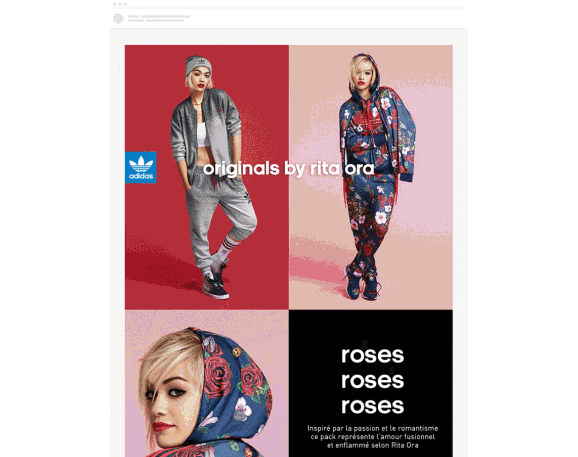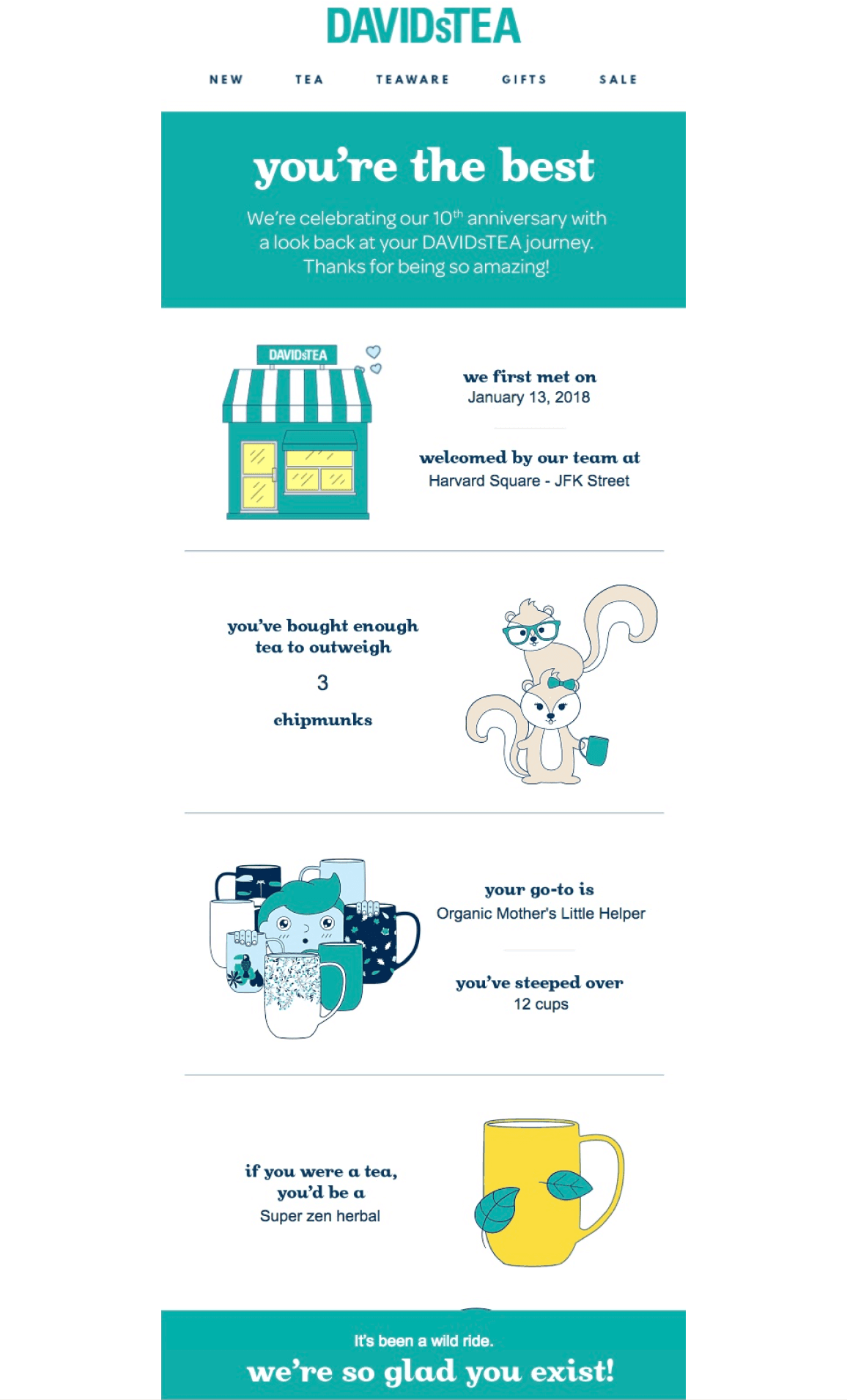9 customer segmentation examples in email marketing
Here are some customer segmentation examples you can take inspiration from.
1. Show products relevant to the customer's gender
Type of segmentation: Demographic
Segmentation based on demographic data like gender can be beneficial as men and women have different preferences. By sending them targeted campaigns for their gender, you can show them more relevant products based on customer needs and get more conversions.
In the email below, Adidas has specifically targeted the male gender with their email design, selection of products, copy, etc., and sent it to their male subscribers.
But be careful with this type of segmentation as some of your customer groups can be gender-neutral, and it might miss the mark with them. Only use this type of segmentation if you are sure of your target segment's gender and what they prefer. If not, stick to other forms of segmentation.

2. Create campaigns appropriate for the season
Type of segmentation: Geographic
This segmentation can be useful for selling seasonal products like umbrellas, winter boots, summer flip-flops, etc. But you can also use this type of segmentation to simply create something specifically for the season, as W&P Design has done in the example below.
They created this campaign to sell their products for making cocktails. Now, cocktails are not a seasonal product, so they could have made it general. Instead, they are targeting customers experiencing winter and providing them with cocktail recipe ideas for the winter.
By doing this, they can relate with their target customers, get to know about their pain points, and give them exactly what they might need, thus increasing the chances of customer retention.

3. Segment customers based on their personality
Type of segmentation: Psychographic
You might argue that it's a demographic segmentation based on age range. But if you look closely, they focus on the customer's personality and whether they feel like an adult or not.
Later down the email, Who Gives A Crap tries to sell to them by saying that bulk buying their toilet paper might be the easiest adulting shortcut. A pretty cheeky but effective way to get young people (both new leads & old customers) struggling with adulting to buy more of their toilet paper.

4. Show customers recommendations based on their interests
Type of segmentation: Psychographic and behavioral
Interest is a bit more complicated type of segmentation as it is a psychographic trait, but you can only identify it by customer's behavior on your website or app. To find out what they are interested in, you can look at their behavioral data like purchase history and browse actions like time spent on a specific page and the type of products they looked at.
In the example below, Lyst analyzes the type of products the target market showed interest in and recommends similar products they might like.
You can use AI tools to analyze customer behavior, find their interests, and recommend products according to their unique needs. Find out more on how AI product recommendations work in our guide on AI in email marketing.

5. Nurture customers based on their lifecycle stage
Type of segmentation: Behavioral
Behavioral segmentation based on the customer's lifecycle stage can help brands improve their onboarding and nurture their leads at the right stages to get more sales and establish brand loyalty.
For example, if someone bought from you long ago and hasn't made a repeat purchase, they are inactive customers. You can send them feedback emails to get to know their customer experience and opinions of your brand to help you win them back or improve your brand to avoid losing your existing customer base in the future.
In the example below, Brooks sends an email to new customers interested in running to nurture them and get them to purchase by directing them to their online shoe finder to help them find the right shoe for running.

6. Send refill emails after the usage period
Type of segmentation: Behavioral
Look at the customer segment who have bought a certain product from your website, and send them a reminder email after the usage period to ask them to repurchase the product from your online store before it gets empty. Here's how Fullscript has done this.

7. Talk to customers in their first language
Type of segmentation: Geographic and demographic
Segmentation based on language goes a bit deeper as you need to identify the language someone speaks, which might not always correlate with where they live. So it depends on both the geography and demography of the people.
For example, some who speak Spanish may not necessarily live in Spanish-speaking countries, but you can still send them an email in Spanish.
It's a great way to segment specific groups and establish a unique bond with your customers. This will work well to target people from places where English is not the primary language of communication, like Germany, Korea, etc.
Here's how McDonald's has implemented this.

8. Show them something relevant to their age
Type of segmentation: Demographic
In this example, Vitruvi sends a back-to-school email to students showcasing a product that might help them stay focused while studying. Now, you might assume that it is meant for all students.
No, it's probably meant specifically for students who are in college because students in school usually don't care about humidifiers, nor do they have the money to buy them.
Segmenting this way is helpful to target the right people with specific needs who are more likely to buy your product and are at the age to make the purchase decision.

9. Reward loyal customers
Segmenting your current customers based on the number of purchases will tell you who your loyal customers are and who are not. Using this information, you can create separate campaigns to reward your loyal customers with exclusive offers, discounts, etc. Here's how DAVIDsTEA implemented this.

Way forward
You can start by segmenting your customers based on similar characteristics of your choice. Mailmodo provides email metrics and analytics that can help you statically and dynamically segment your target audience based on the common characteristics you chose to segment by. Read our guide to discover how to create static and dynamic segments using Mailmodo to help you create more targeted email campaigns for your customers using customer data.



















